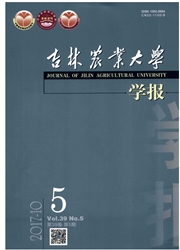

 中文摘要:
中文摘要:
对长白山不同生境中朝鲜淫羊藿种群无性系构型、根茎生长及其生物量的变化进行了研究。结果表明:朝鲜淫羊藿种群以稀疏游击型模式扩展,根茎合轴分枝,分枝少,分枝角度不规则。根茎着生次序分级明显,故按根茎形成的先后顺序和根茎颜色将其划分为12个龄级。种群根茎数量、长度及生物量在蒙古栎林、胡桃楸林和杂木林下均表现出增长型年龄结构,蒙古栎林下环境最适合朝鲜淫羊藿的更新。1龄根茎的数量和物质贮量对翌年地上茎的数量和质量以及无性系种群的更新与扩张具有重要的生物生态学意义。根茎年龄、养分贮量、地被物的厚度、降雨量等综合因素是影响根茎萌发和生长的主要原因。
 英文摘要:
英文摘要:
Epimedium koreanum is a typical species of perennial herbaceous rhizome plant. Its natural population is mainly renewed by vegetative propagation of rhizomes. Clonal architecture and age structure of rhizomes of Epimedium koreanum under different conditions of Changbai mountains were studied. The results indicated that it was clonal architecture of guerilla and a shoot ramet. The age structure was characterised by number, length and biomass of rhizomes. The number, length and biomass of rhizomes changed in increased age structure in Quercus mongolica forest, Juglans mandshurica forest and Shaw forest. The Quercus mongolica woods were the most favorable environment for Epimedium koreanum clonal population. The rhizomes were able to maintain for at least nine years, and the old age rhizomes were more sensitive to the environment variation than the middle age. In addition, the rhizomes in the first age class had an important place in and a function for regenerating population of Epimedium korean um.
 同期刊论文项目
同期刊论文项目
 同项目期刊论文
同项目期刊论文
 期刊信息
期刊信息
